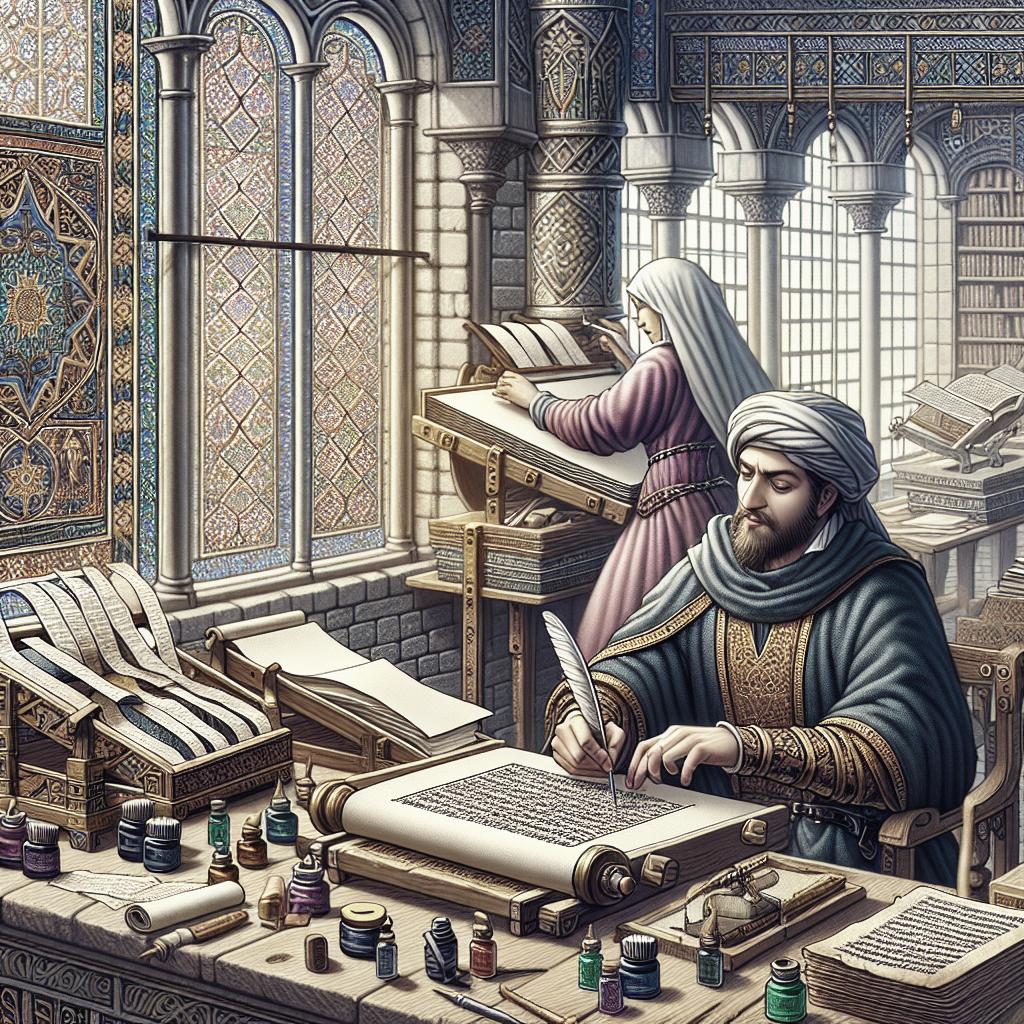<>
Significance of Codices in History: An In-depth Exploration Codices, ancient manuscript books created long before the advent of the printing press, hold immense historical, cultural, and scholarly significance. These early books provide invaluable insights into the societies, traditions, languages, and knowledge of ancient civilizations. In this blog post, we will delve into the significance of various codices throughout history, from the enigmatic Aztec and Mayan codices, to the ancient Roman codices and the contentious Grolier Codex. By exploring the invention and evolution of the codex, as well as the debated origins attributed to figures like Julius Caesar, we aim to uncover the profound impact these ancient books have had on the preservation and dissemination of knowledge.Discovering the Makers of the Aztec Codex: A Historical Exploration
### The Makers The Aztec codices are among the most fascinating and intricate works of pre-Columbian Mesoamerican literature. Created by skilled scribes and artisans, known as ‘tlacuilos,’ these codices were written on materials such as deer skin, cotton, and bark paper. The tlacuilos were not merely writers; they were highly trained artisans with deep knowledge of Aztec mythology, history, and religion, often commissioned by the ruling elite. Their artistry and precision enabled the transmission of complex information through vivid pictorial representations and glyphs. ### The Process Creating a codex was a meticulous process that involved several stages. Initially, the materials were prepared – deerskin would be tanned, and bark paper would be smoothed and coated for durability. The tlacuilos would then plan the layout, focusing on ensuring the coherence of the narrative and symbolism within the pictorial glyphs. Colors were derived from natural sources like insects, plants, and minerals. Each codex was a labor-intensive masterpiece, embodying the rich cultural and intellectual endeavors of the Aztec civilization. ### The Legacy The legacy of the Aztec codices transcends their immediate historical context. Despite the destructive efforts of Spanish colonizers, who aimed to erase indigenous cultural documents, several Aztec codices survived and have provided invaluable insights into pre-Columbian societies. These codices serve as primary sources for understanding the social, political, and religious landscape of the Aztecs, bridging the past with the present. ### Conclusion The significance of the Aztec codices extends beyond their artistic beauty; they offer a window into the intellectual and cultural world of the Aztecs. They remind us of the importance of preserving and respecting indigenous knowledge systems, while highlighting the rich historical tapestry of Mesoamerican civilizations.
Controversial from the Outset
The story of codices, particularly those discovered and studied during the European colonization period, is often one of controversy. Many codices were deemed heretical or pagan by European colonizers and subsequently destroyed or hidden. This has led to ongoing debates among historians and scholars regarding the authenticity and interpretation of those that survived. The destruction of countless codices by conquistadors and missionaries significantly disrupted the continuum of indigenous knowledge. One of the most contested codices is the Grolier Codex, which has sparked debates about its authenticity since its discovery. Skeptics emphasize anomalies in its creation process compared to other pre-Columbian manuscripts. These debates underscore the importance of rigorous methodologies in the study of ancient documents, as well as the broader implications of colonial histories in the preservation and interpretation of cultural artifacts.
Digging In
Scholars and archaeologists have been tirelessly working to piece together the historical jigsaw puzzle left by codices. Through the use of advanced technologies such as radiocarbon dating and digital imaging, researchers have been able to verify the ages and origins of these manuscripts with increased accuracy. For instance, the use of multispectral imaging has revealed hidden details in the codices that were previously invisible to the naked eye, providing deeper insights into their content and creation. Additionally, collaboration with indigenous communities has become an integral part of codex studies. These partnerships help ensure that interpretations and conclusions about the codices remain culturally sensitive and historically accurate. Through collaborative efforts, modern scholars can better align their findings with the oral histories and traditions of the communities from which these codices originated, fostering a more holistic understanding of these invaluable documents.
Use and Appearance of the Grolier Codex
The Grolier Codex, named after the Grolier Club in New York where it was first exhibited, is a rare and contentious piece of pre-Columbian Mesoamerican literature. This codex, containing mainly astronomical content, consists of ten painted pages depicting deities and calendar signs. Its iconography and style closely resemble other known codices, yet doubts about its authenticity persist primarily due to uncertainties about its discovery and provenance. The Grolier Codex was purportedly found in a cave in Mexico during the 1960s, claimed to be part of a looted archaeological site. This controversial origin, combined with stylistic differences and material inconsistencies, led many experts to initially view it with suspicion. However, recent studies using scientific dating methods and comparative analysis with other recognized codices have led to a growing acceptance of its authenticity, though debates continue within the academic community.
The History of Codex: Invention and Evolution
Codices represent a revolutionary shift from scrolls to bound books, marking a significant evolution in the way information was recorded and accessed. This transition began in the ancient Mediterranean, particularly within Roman and Christian traditions. Early codices were made from durable materials like vellum and parchment, offering a more compact and portable alternative to scrolls. This format facilitated easier reading, referencing, and preservation, contributing to their widespread adoption. Codices were instrumental in the spread of Christianity, as they allowed for the codification and dissemination of religious texts. The transition from scrolls to codices also parallels technological advancements and shifts in societal structures, reflecting how mediums of knowledge storage evolve in response to cultural and practical needs. As codices became more prevalent, they paved the way for standardized texts, which significantly impacted the development of libraries and education systems across the medieval world.
Uncovering the Truth: Did Julius Caesar Invent the Codex?
### The New Theory A fascinating theory posits that Julius Caesar himself may have played a pivotal role in the inception of the codex format. While traditionally, the invention of the codex was seen as a gradual evolution, this theory suggests a more intentional and direct contribution from Caesar. Historical accounts suggest that Caesar, known for his innovations and reforms, may have adopted and popularized the use of codices for military and administrative efficiency. ### Why the Debate Matters This debate is significant because it recontextualizes our understanding of historical innovation and the individuals behind such advancements. If Julius Caesar indeed had a hand in popularizing the codex, it would highlight the role of political and military leaders in influencing cultural and technological shifts. Understanding the exact origins of the codex sheds light on broader historical processes and the diffusion of knowledge across different cultural and temporal contexts. ### The Bottom Line While definitive evidence linking Julius Caesar to the creation of the codex remains elusive, the debate itself underscores the importance of nuanced and critical historical inquiry. By examining potential contributions from prominent historical figures, we gain deeper insights into the complex interplay between individual agency and broader societal transformations in the evolution of written media. ### The History of Codex: Invention and Evolution in Roman Civilization The Roman adoption of the codex format represented a leap forward in the organization and accessibility of written knowledge. Romans used wooden tablets coated with wax for writing. These were small and portable, making them ideal for note-taking and correspondence. Over time, these tablets evolved into bound books, with pages made from parchment or vellum, sewn together along one edge. The widespread use of the codex by the Romans also led to significant cultural and intellectual advancements. Libraries became more organized, and scholarly works were more easily preserved and shared. This format eventually became the standard for book-making in Europe and the foundation for modern books, influencing how information was recorded, stored, and disseminated for centuries to come. ### Related Posts:
Post Navigation
An exploration of the significance of codices in history reveals a rich tapestry of cultural, technological, and intellectual evolution. Codices, from their inception to their role in various civilizations, have shaped the way knowledge is recorded and transmitted. Below is a brief summary table capturing the key points discussed. “`
| Topic | Key Points |
|---|---|
| Aztec Codices | Created by skilled artisans, detailed pictographic history, surviving texts offer invaluable insights. |
| Controversial Codices | Debates about authenticity, destruction by colonizers, importance of accurate historical interpretation. |
| Research Advances | Use of technology like radiocarbon dating and multispectral imaging, partnerships with indigenous communities. |
| Grolier Codex | Rare, astronomical content, contentious authenticity, recent studies supporting its authenticity. |
| History of Codex | Shift from scrolls to bound books, impact on knowledge dissemination and storage, role in spread of Christianity. |
| Julius Caesar’s Role | New theory about Caesar’s influence, significance of the debate, impact on historical understanding. |
| Roman Civilization | Wax tablets evolving into bound books, advancement in library organization, foundation for modern books. |
“` ### Leave a Reply Cancel Reply


